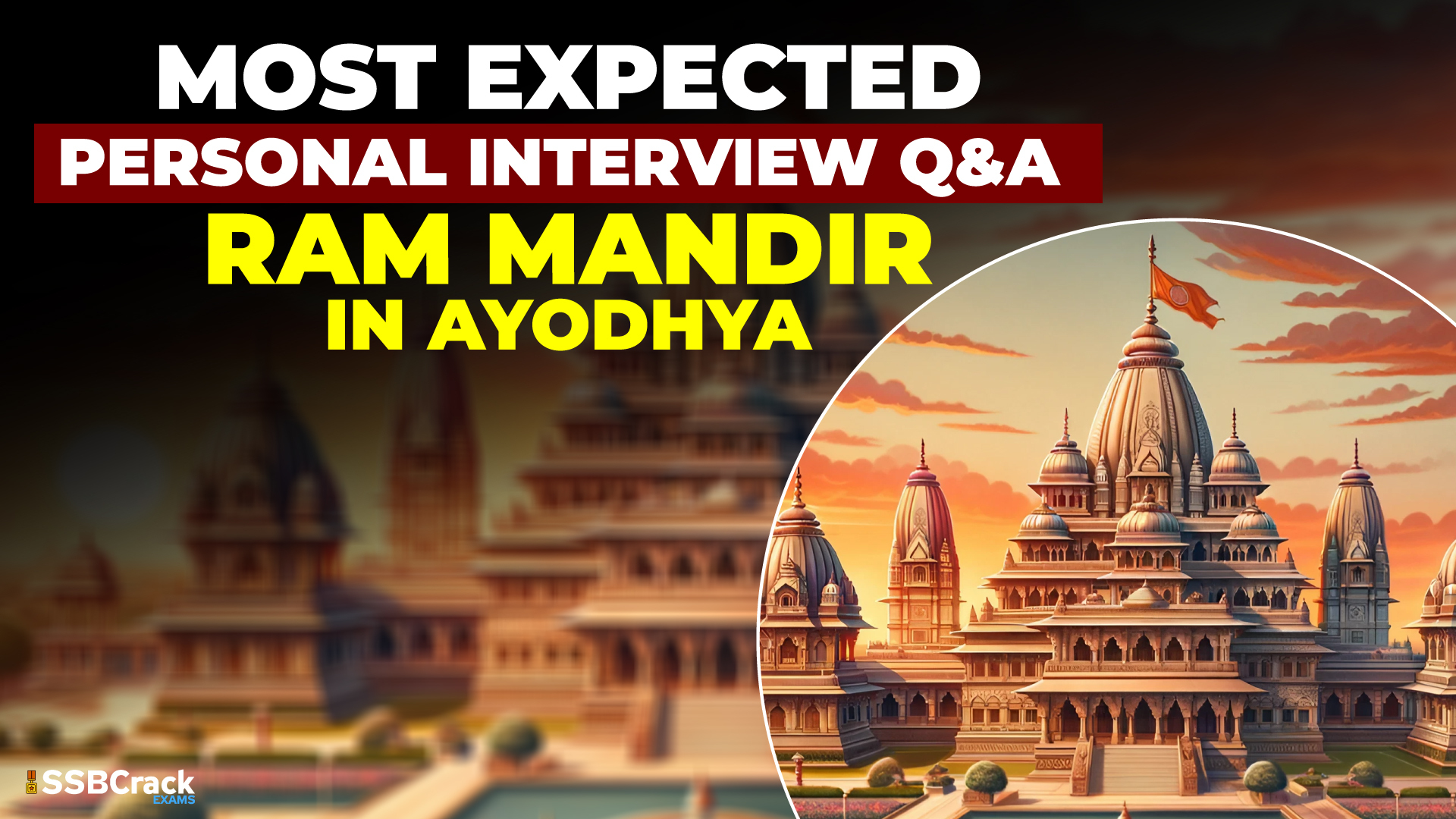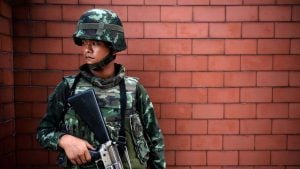The SSB (Services Selection Board) Personal Interview is a critical aspect of the selection process, evaluating candidates not only for their leadership qualities but also their awareness of current affairs and societal issues. The construction of the Ram Mandir in Ayodhya is a topic of significance in contemporary India. This article provides a comprehensive guide to 20 expected questions, along with suggested answers, that candidates might encounter during the SSB Personal Interview regarding the Ram Mandir in Ayodhya.
- **Question: Can you provide an overview of the historical background of the Ram Mandir issue in Ayodhya?Answer: The Ram Mandir issue dates back to the 16th century when the Mughal emperor Babur built the Babri Masjid. The dispute intensified in the 20th century, leading to legal battles and, ultimately, the construction of the Ram Mandir in 2020.
- **Question: What are the cultural and religious significance of the Ram Mandir in Ayodhya?Answer: The Ram Mandir holds immense cultural and religious significance for millions of Hindus as it is believed to be the birthplace of Lord Ram. Its construction is seen as a testament to the restoration of a sacred site.
- **Question: How does the construction of the Ram Mandir impact India’s socio-political landscape?Answer: The construction of the Ram Mandir reflects the fulfillment of a longstanding demand and has implications for the socio-political fabric. It signifies a shift in India’s approach to cultural heritage and has the potential to foster a sense of national unity.
- **Question: What role did the judiciary play in resolving the Ram Mandir issue?Answer: The judiciary played a crucial role by providing legal verdicts on the ownership of the disputed site. The Supreme Court’s final judgment in 2019 paved the way for the construction of the Ram Mandir.
- **Question: How can the construction of the Ram Mandir contribute to national integration?Answer: The construction of the Ram Mandir has the potential to foster national integration by acknowledging the cultural and religious sentiments of a significant section of the population. It emphasizes the idea of unity in diversity.
- **Question: How do you view the balance between cultural heritage and secularism in the context of the Ram Mandir?Answer: The construction of the Ram Mandir raises questions about the delicate balance between cultural heritage and secularism. It’s essential to navigate this balance by respecting diverse perspectives and promoting harmony.
- **Question: What measures can be taken to ensure communal harmony post the construction of the Ram Mandir?Answer: To ensure communal harmony, efforts should be made to promote interfaith dialogue, cultural understanding, and inclusive policies that address the concerns of all communities.
- **Question: In what ways can the Ram Mandir serve as a symbol of India’s cultural heritage?Answer: The Ram Mandir stands as a symbol of India’s rich cultural heritage, representing the amalgamation of historical and religious narratives. Its construction preserves and celebrates this heritage for future generations.
- **Question: How does the Ram Mandir issue connect with the principles of secularism?Answer: The Ram Mandir issue intersects with secularism as it involves reconciling religious sentiments with the principles of a secular state. Balancing diverse beliefs within the framework of secularism is critical.
- **Question: What impact might the Ram Mandir have on tourism in Ayodhya?Answer: The construction of the Ram Mandir is expected to boost tourism in Ayodhya, attracting pilgrims and tourists interested in exploring the cultural and historical significance of the site.
- **Question: How can the government ensure that the Ram Mandir construction adheres to principles of inclusivity?Answer: Government initiatives should prioritize inclusivity by involving diverse stakeholders in the decision-making process, ensuring representation, and fostering an environment where all communities feel included.
- **Question: What is your personal opinion on the role of religious monuments in shaping national identity?Answer: While personal opinions may vary, it is essential to recognize that religious monuments can contribute positively to shaping national identity by preserving cultural heritage and fostering a sense of shared history.
- **Question: How can the Ram Mandir serve as a catalyst for economic development in Ayodhya?Answer: The construction of the Ram Mandir can boost local economies through increased tourism, job creation, and infrastructure development. It presents opportunities for economic growth in Ayodhya.
- **Question: What lessons can be drawn from the resolution of the Ram Mandir issue for addressing other cultural disputes in India?Answer: The resolution of the Ram Mandir issue underscores the importance of legal processes, dialogue, and finding common ground. Similar approaches can be adopted to address other cultural disputes in India.
- **Question: How does the construction of the Ram Mandir align with the principles of religious freedom?Answer: The construction aligns with religious freedom by acknowledging the sentiments of a particular religious community. It is crucial to ensure that such initiatives respect the rights and freedoms of all citizens.
- **Question: In what ways can the youth contribute to promoting harmony and understanding post the Ram Mandir construction?Answer: Youth can play a pivotal role by engaging in interfaith dialogues, promoting cultural understanding, and actively participating in initiatives that foster harmony and unity.
- **Question: How does the Ram Mandir issue connect with the broader narrative of cultural preservation in India?Answer: The Ram Mandir issue is part of the broader narrative of cultural preservation in India, emphasizing the importance of safeguarding historical and religious sites to preserve the country’s diverse cultural heritage.
- **Question: What challenges might arise in maintaining the sanctity of the Ram Mandir post-construction?Answer: Challenges may include managing large crowds, ensuring security, and maintaining the spiritual sanctity of the site. Implementing effective management strategies will be crucial.
- **Question: How can the government leverage the construction of the Ram Mandir for international cultural diplomacy?Answer: The government can leverage the construction for international cultural diplomacy by showcasing India’s rich heritage, fostering cultural exchange programs, and promoting Ayodhya as a global cultural destination.
- **Question: How can the Ram Mandir serve as a symbol of unity amidst India’s diverse cultural landscape?Answer: The Ram Mandir can symbolize unity by embracing diversity and highlighting the shared cultural heritage of all communities. It serves as a reminder of India’s ability to celebrate differences while fostering national unity.
Conclusion:
By preparing thoughtful and informed responses to these 20 expected questions, candidates can demonstrate their knowledge, critical thinking abilities, and a nuanced understanding of the Ram Mandir issue in Ayodhya. In navigating these questions during the SSB Personal Interview, candidates have the opportunity to showcase their awareness of societal issues and their ability to approach sensitive topics with diplomacy and cultural sensitivity.


















